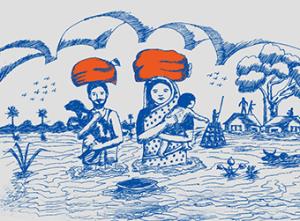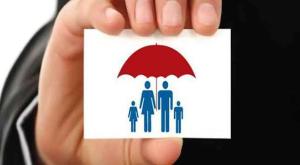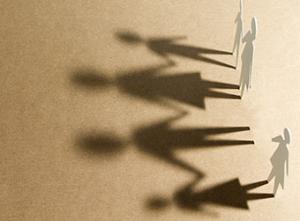Kerala Flood Relief – Time to Balance Emotions With a Reason For Effective Help
Blog Title
970 |
“The essential difference between emotion and reason is that emotion leads to action while reason leads to conclusions.” – Donald Calne (1936 – ), Canadian Neurologist
It’s an emotional moment for the Indians. Everyone in India is trying to help their fellow brothers and sisters in Kerala. What to do and how to do are the questions everyone is trying to find answers.
But the challenge is to keep this emotional passion in control and make rational decisions so as to make your help efforts more effective.
Govt of India to Govts of the Gulf countries are making money available for the state. Donations are pouring in the CM Relief Fund. Indian Military forces are in action in the most important rescue operations. Goods are mobilised by some renowned local and national NGOs like Goonj,Uday Foundations etc.
Money, physical help, and goods everything is reaching the flood-affected state. Insurance companies like Edelweiss Tokio have set up a special cell to address the claim process quickly.
Yet at an individual level, people are concerned and want to help eagerly. But there needs to be some calm and adequate consideration before you act.
“The sign of an intelligent people is their ability to control emotions by the application of reason.” – Marya Mannes (1904 – 1990), American Author and Critic
There is a guideline by Centre for international disaster information which can be of use in times like this.
- Why cash donation is very important:
When disaster strikes the good news is this: the easiest way to support response efforts is also the most economically efficient, and effective through monetary donations to relief agencies.
Financial contributions allow professional relief organizations to purchase exactly what is most urgently needed by disaster survivors when it is needed.
Cash donations allow relief supplies to be purchased near the disaster site, avoiding delays, and steep transportation and logistical costs that can encumber material donations. Some commodities, particularly food, can almost always be purchased locally even after devastating emergencies and in famine situations.
Cash purchases also convey benefits beyond the items procured. They support local merchants and local economies, ensure that commodities are fresh and familiar to survivors, that supplies arrive expeditiously and that goods are cultural, nutritionally and environmentally appropriate.
Many people respond to disasters by collecting food, clothing and household items for people in need. It is not unusual for a community and civic groups to collect thousands of pounds of material. These donations require transportation — which is expensive and logistically complicated — and a pre-identified recipient on the ground who will receive the shipment, pay customs and other fees, sort and distribute the items.
- Listen to experts:
Every disaster is unique and every disaster response is carefully tailored according to population needs that are assessed by relief professionals on the ground.
Relief organizations that have personnel working in the disaster area coordinate with each other, with government entities and with local groups to make accurate assessments.
These appraisals evolve daily as survivors migrate to safety and normalcy returns. Unsolicited, unneeded commodities are never required in early stages of response, and they compete with priority relief items for transportation and storage.
Relief organizations that request material donations through public appeals will communicate specifically what items are needed in order to avoid these problems.
WHO has guidelines for donations of medicines:
A 1999 report from the World Health Organization issued guidelines for medical donations to disaster areas and war-torn regions. Among the common problems it saw were poorly labelled packaging, expired medications and drugs sent that had nothing to do with the medical problems on the ground.
After a 1988 earthquake in Armenia, the country received 5,000 tons of drugs and medical supplies worth $55 million. It took a staff of 50 people six months just to catalogue the donations, most of which were only labelled with brand names; less than half were used for emergency medical needs.
To repeat the quote mentioned at the beginning. “The essential difference between emotion and reason is that emotion leads to action while reason leads to conclusions.” – Donald Calne (1936 – ), Canadian Neurologist
We all are emotionally charged to help. This is the first step. But our conclusion of what we should be doing has to be rational in order to be effective.
Get into the action mode, keep a track of the situation, and take a considered decision. The ultimate objective is to make your help reach the needy and not just help without the concerns for the outcome.
Still can’t resist, just donate the money to the CM Relief Fund. This is the ideal way to get into action.












